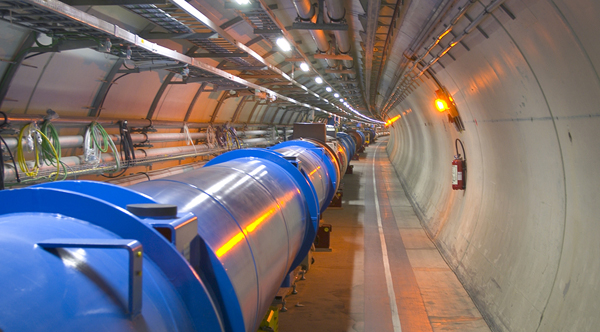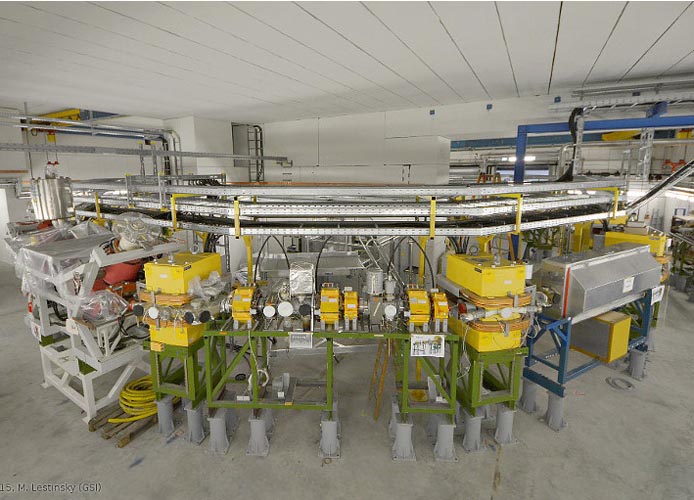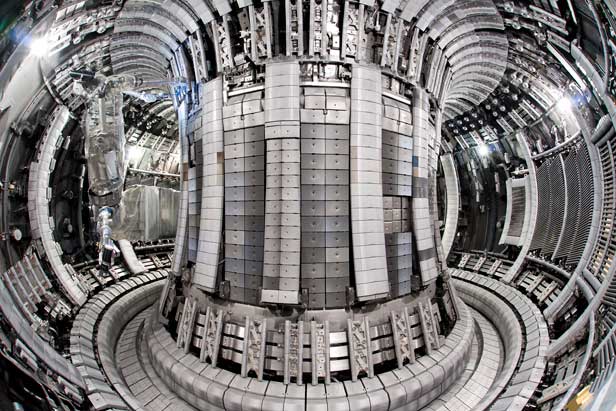India’s Talented Scientists Are Making a Mark in These Six Global Mega Science Projects
At a time when India is battling a brain drain epidemic, here are some ambitious global projects that hold a world of promise for Indian scientists and are giving them a much-needed boost.

“Almost everything that distinguishes the modern world from earlier centuries is attributable to the progress in science.” – Bertrand Russell
In February 2016, the international scientist community opened a new window to the study of the cosmos by detecting gravitational waves for the first time in history. This laudable scientific feat was repeated for the second time in June this year, confirming its existence and making the 39 Indian scientists, who participated in the project, smile.
Global mega science projects often involve cross-border cooperation between teams of competent researchers. While the scientific goals of these projects are significant, their worldly benefits are equally important. By collaborating, participating and delivering components for these giant projects, India will place itself as a major player in fundamental science. In addition, these projects have the potential to create new avenues for science-industry collaborations and to popularise science in the country.
At a time when India is battling a brain drain epidemic, here are some mega science projects that hold a world of promise for Indian scientists and are giving them a much-needed boost. Welcome to the world of mega science!
1. LIGO – Gravitational Wave Analysis

Photo Source
Gravitational waves are ripples in the fabric of space-time caused by violent and energetic processes in the universe. LIGO or Laser Interferometer Gravitational-Wave Observatory is a large-scale physics experiment that detects cosmic gravitational waves and develops them as an astronomical tool.
There are two LIGO observatories in USA (at Livingston and Richland) that are operated by Caltech and MIT. The Indian team in the global LIGO collaboration, which is involved in analysing the data collected by LIGO observatories, has 60 members.
Work has also begun on building a LIGO observatory in India which will be called INDIGO. It will be the fifth in the world, after the ones being built in Japan and Italy. INDIGO will be an international collaboration between the US LIGO Labs and three leading Indian institutions – Institute of Plasma Research (IPR), Inter University Centre for Astronomy and Astrophysics (IUCAA), and Raja Ramanna Centre for Advanced Technology (RRCAT).
2. LHC – The God Particle

Photo Source
There is an intrinsic Indian connection to the discovery of Higgs Boson at CERN – Satyendra Nath Bose, the Indian scientist after whom the sub-atomic particle is named. Over the years, CERN, the world’s largest particle physics laboratory, has seen Indian scientists make quite a mark with their work.
Indian scientists have helped build the Large Hadron Collider (LHC), the largest single machine and the most powerful particle collider in the world. They are also collaborating on two significant CERN experiments, CMS and ALICE. CMS is one of the two experiments that discovered the Higgs Boson (also called God Particle) and ALICE studies matter under extreme conditions of density and temperature that may have existed at the birth of the universe.
India is also poised to become an associate member of CERN by the end of 2016, which would entitle it to attend even the restricted sessions of the organization. And this is all thanks to our brilliant scientists.
3. Thirty Metre Telescope – World’s Most Advanced Telescope

Photo Source
The Thirty Meter Telescope (TMT) will be the world’s most advanced and capable ground-based telescope. At the heart of the telescope will be a mirror made up of 492 individual segments. Precisely aligned, these segments will work together as a single reflective surface with a diameter of 30 metres.
The TMT project is an international partnership between CalTech, Universities of California, Canada, Japan, China and India. The telescope was initially supposed to come up in Hawaii but had to be stopped due to local protests. Hanle in Ladakh was then proposed as one of the alternative sites, the others being in Chile.
The TMT- India project will propel India into a special league of deep space research. The main Indian institutes working on this unique project are Aryabhatta Research Institute for Observational Sciences (ARIES), the Indian Institute of Astrophysics (IIA), and the Inter-University Center for Astronomy and Astrophysics (IUCAA).
You May Also Like: These 8 IISc Inventions Will Make You Proud of India’s Innovations in Science and Technology
4. ITER – Fusion Energy
Photo Source
ITER (International Thermonuclear Experimental Reactor) is an experimental nuclear fusion reactor that is being built at Cadarache in the south of France. It’s the core of a nuclear fusion research megaproject that will also be the world’s largest plasma physics experiment.
The ITER project aims to make the long-awaited transition from experimental plasma physics to full-scale electricity-producing fusion power stations. The ITER station is expected to produce at least ten times more energy than the energy that will be required to operate it.
The project is funded and run by seven member entities—the European Union, India, Japan, China, Russia, South Korea, and the United States who will mostly contribute in the form of components. In India, the Ahmedabad-based Institute for Plasma Research is contributing towards the building of the tokamak reactor’s gigantic cryostat.
5. FAIR – Antiproton and Ion Research

Photo Source
The Facility for Antiproton and Ion Research (FAIR) is an international accelerator facility that will be used to study the building blocks of the universe. Situated in Darmstadt in Germany, FAIR will use intense beams of antiprotons and ions for research in the fields of nuclear, particle, plasma and anti-matter physics.
Besides exploring the fundamental aspects of physics, the project will look into the evolution of the universe. The project will also explore and study applications of its research in biology and bio-medical sciences.
In India, the project is being co-ordinated by the Indo-FAIR Coordination Centre (IFCC) at Bose Institute, Kolkata and being jointly implemented by the Department of Science and Technology and the Department of Atomic Energy. Several Indian industries are also involved in building advanced equipment for the FAIR accelerator.
6. SKA – World’s Largest Radio Telescope

Photo Source
The Square Kilometre Array (SKA) project is an international effort to build the world’s largest radio telescope that is currently scheduled for completion in 2024. With an unprecedented large collecting area of over a square kilometre, the SKA will be 50 times more sensitive and 10,000 times faster than any imaging radio telescope array previously built.
While India has been involved with the project since its earliest days, the Indian Government formally joined the SKA project as a member in 2015. At present, Indian scientists are leading the design team for the Telescope Manager, the brain and nervous system that will control the entire SKA observatory.
The National Centre for Radio Astrophysics (NCRA-TIFR) in Pune is the nodal institute for overseeing SKA related activities within India. Recently, the Giant Metrewave Radio Telescope (GMRT) located near Pune has been granted SKA Pathfinder status. Pathfinders are telescopes around the globe that give valuable feedback to the designing teams of SKA.
India’s participation in frontier mega-projects such as these six provides an excellent opportunity for the country’s scientific community to showcase its prowess on the global stage. At the same time, next-generation experiments on Indian soil also offer challenging career options in science and technology. This step can be significant in encouraging India’s top talents, who are working in foreign organizations and laboratories, to return and work in India.
Also Read: Bengaluru Scientists Are Making Eco-Friendly Wood Polymer Composites from a Deadly Invasive Weed
Like this story? Have something to share? Email: [email protected], or join us on Facebook and Twitter (@thebetterindia). To get positive news on WhatsApp, just send ‘Start’ to 090 2900 3600 via WhatsApp.
If you found our stories insightful, informative, or even just enjoyable, we invite you to consider making a voluntary payment to support the work we do at The Better India. Your contribution helps us continue producing quality content that educates, inspires, and drives positive change.
Choose one of the payment options below for your contribution-
By paying for the stories you value, you directly contribute to sustaining our efforts focused on making a difference in the world. Together, let’s ensure that impactful stories continue to be told and shared, enriching lives and communities alike.
Thank you for your support. Here are some frequently asked questions you might find helpful to know why you are contributing?


This story made me
-
97
-
121
-
89
-
167












